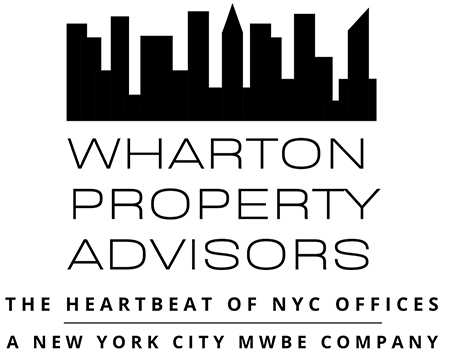It is well known that the commercial real estate industry, and most particularly the office sector, has been reeling from the double whammy of remote work combined with a 525 basis point increase in interest rates. But here’s the good news – the situation could be a lot worse. There may be two strikes on the office business, but it is by no means out as I explain below.
What if the American economy was more like Germany, which has experienced just 0.3% growth since the fourth quarter of 2019. In contrast, there have been 14 million new jobs created in the United States since the beginning of the pandemic and our gross national product grew by 3.3% in the fourth quarter of 2023 and 2.5% for the entire year despite predictions of recession. Unemployment is essentially at a 50-year low under 4%, and inflation has fallen to approximately 3% by most measures. Further, the stock market is at record highs and consumer sentiment is improving after a long trough.
At the same time, there is a split-screen effect as the multi-trillion dollar commercial office business has been rocked to its core, with roughly 50% office attendance and 20% vacancy around the country and in New York City. However, it is axiomatic that office leasing is linked to jobs and economic growth. Fortunately, most major companies have enjoyed solid performance coming out of the pandemic which at least provides some incentive to find a decent sized office to house those employees. Imagine what would be happening then if the United States were shedding jobs instead of creating them at an unprecedented rate. That would be just another reason to reduce office space, which fortunately is not on the cards.
And here’s some more good news, as recently reported in an article in the Washington Post last Sunday – the Phillips curve is dead. I’ll save you the trouble of dusting off your old economic textbooks, which faithfully recite this long-held economic nostrum that unemployment and inflation move inversely (i.e., unemployment should rise when inflation is coming down, as it is now). That old saw has been conclusively disproven by the behavior of the American economy. The sound you are hearing is an ancient tenet carved in stone falling to the ground from economic Mt. Sinai (or perhaps Mt. Greenspan) with a resounding thud. In addition, as noted by Jerome Powell yesterday the rate of wage increases now exceeds the rate of inflation and productivity is on the rise (he is watching closely to see if the improvement in productivity continues with the rise of AI before committing to lower interest rates).
With the United States experiencing the fastest post-Covid drop in inflation as compared to all other major industrial countries, some conclusions can also be drawn on its impact on our world of commercial real estate. Looking at the big picture first, it appears that the much-maligned stimulus which pumped trillions of dollars into the economy after Covid actually worked. Even Larry Kudlow and Steve Forbes have admitted that the American economy is strong, although the latter grumbled that there will be a problem when the fiscal stimulus wears off by comparing us to Argentina (don’t cry for me, Javier Milei).
At the same time, Covid had a disastrous effect on the commercial office leasing which we have long chronicled. But one positive note is that we also know that there is a direct relationship between employment and companies taking office space. Imagine if we had experienced a recession instead of an increase of 14 million jobs what the impact would’ve been on the office economy. Spoiler alert, it wouldn’t be any good. So while we are quick to find fault when things go badly, let’s recognize a success when we see it, and hope that we can build on that with better days ahead. Indeed, a broad consensus is also starting to build that the American economy writ large is in a strong position as any other major industrial country, and will likely avoid a recession. A particular favorite of mine among the prognosticators is my old business school professor Jeremy Siegel who foresees a Goldilocks economy, which is one that it’s not too hot or too cold. Of course, he has almost always been an optimist, but he has also almost always been right.
He’s not alone. Jonathan Gray, President and CEO of Blackstone recently told the Financial Times, “We really see real estate bottoming from a valuation standpoint,” he said. “The declining cost of capital with rates coming down and spreads coming down for real estate borrowing is very helpful.” Further, Citadel CEO Ken Griffin said in an interview on CNBC on Tuesday that “the overall economy looks pretty damn good right now”, noting that there “is a real change in mindset” from four or five months ago.
However, before we get too carried away, we have to recognize the reality that the office sector is still struggling. As a result, Barry Sternlicht of Starwood reminded everyone while speaking at a conference that “the office market has an existential crisis right now” largely due to remote work. As a result, he pointed out that what was once a $3 trillion asset class is now probably worth just $1.8 trillion, which results in a whopping $1.2 trillion of loss in value. Small wonder that New York Community Bancorp (which bought Signature Bank or and Japanese lender Aozora (which is exposed to Chicago real estate) just booked losses in the hundreds of millions on their loan portfolios . To further the Greenspan references, someone has to take the pain and that will be landlords of older building and banks that are heavily exposed to office.
Ironically, this apparently disastrous outcome may not be as bad as it seems, unless you are a property owner or a lender that will have to dispose of its distressed loan portfolio. That is because we have been talking for months if not years about an anticipated period of price discovery, which will bring new money back into the real estate market. Once a market equilibrium is reached, the frozen deal pipeline might thaw as part of the natural rhythm of the economy, which in turn would finally unleash desperately needed fresh investment and financing into the real estate industry based on realistic valuation levels.
And surprise, surprise, in the last few weeks we have seen the announcement of several major funds that are on the hunt for distressed office properties, plus several more at lesser amounts. The biggies are the following:
- One of NYC’s biggest landlords, RXR Realty and Ares Management are teaming up to create a $1 billion fund for the purpose of acquiring distressed Manhattan offices in the middle of the Class A part of the market;
- SL Green is looking at to start raising funds for a $1 billion New York City opportunity debt vehicle; and
- Reven Office REIT, a mortgage real estate investment trust is looking to raise $1 billion for to office owners, including $900 million a “blind pool” IPO (similar to the blank-check SPACs which were all the rage a few years ago).
These investors have been waiting patiently on the sidelines for property values to fall sufficiently to be deployed. I believe it is a harbinger that augurs well for the future, even with hybrid work an accepted part of the office landscape. While I’m not going to predict when the interest rates will be cut and how far they will fall even though I was a bond trader in another life, I do know this. The smart money now thinks that the American economy is strong and its continued resilience combined with the anticipated downward direction of interest rates should translate into better days for commercial real estate in the mid to long term, if not the next couple of years. Stay tuned.
Thank you,
Ruth Colp-Haber
Partner
Counselor of Real Estate
Fellow of Royal Institution of Chartered Surveyors



